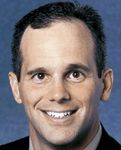Practices should consider more than electronic health records when going paperless
Electronic health records are only part of the process of going paperless.

This is an orange seed to apple tree discussion. When we talk about a practice that has become a truly technology-connected practice, we must discuss not only the EHR software, but also:
The whole process may sound daunting at first, but there are tools that can make it more efficient and effective. Although there have been plenty of articles in the past few years (including articles I wrote), this article will focus on the "other devices" that will separate the offices that just have EHR from those that are truly technology connected.
Simply put, your office cannot be paperless unless you get rid of all your charts and all the new paper that comes into your office. Still, those paper media have tremendous value. For as little as a few hundred dollars a month, you can transfer all your charts and documents into an electronic format using optical recognition tools. You also can categorize them and place them on the necessary fields in your software so that you can search, access, analyze, store, and utilize them more efficiently to yield greater information.
A document management solution (such as ECR Vault by Comsquared Systems, http://www.comsquared.com/) can reduce the extraordinary operating costs associated with chasing paper around your office. It also can increase operational performance and productivity.
The accounts receivable area of most practices is a complete money drain. Consider that the average claim costs $5.38 to process. Multiply that by how many claims your office files in a month. That's a lot of money. Many new technologies can reduce that cost to about $0.58 a claim.
The company behind a leading medical payment solution (A-Claim, Preferred Health Technology Inc., http://www.a-claim.com/) said it works with more than 1,500 medical insurance companies, including Medicare, United Health Care, Aetna, and the Blue Cross/ Blue Shield family. With a swipe of the patient's insurance card, this technology allows you to obtain instantly eligibility, authorization, comprehensive benefits package, deductible and deductible remaining. You can also swipe the patient's credit, debit, or health-savings account card, but hold payment until the explanation of benefits is returned. At that point, you can process the remaining balance with a few clicks, eliminating the need for your accounts receivable department to send patient letters, as well as the costly expense of preparing these letters.
Printers/multi-function devices
There are some key rules when purchasing multi-function devices or printers. Cheap devices sound good at the store, but when you look at total cost of ownership, the cost of ink cartridges can quickly add up to thousands of dollars.
Invest in a device with a high estimated print volume (at least 40 pages/day) and a high-yield toner cartridge. Also look for a high-speed print rate so that it does not cost you staff time while waiting for the pages to be printed.
Internet eyewear sales will be one of the largest trends in eye care during the next 5 years. Granted, you may be hesitant to accept this as a reality, but last year, 6% of all optical sales in the United States were online. Most optical companies expect that number to rise into the double digits in the next 2 years.
With this trend your practice will need to adapt what and how you sell eyewear. Leading companies, such as CyberImaging ( http://www.cyber-imaging.com/) and a joint venture between Essilor Labs ( http://www.essilorusa.com/) and Frames Direct ( http://www.framesdirect.com/) to provide eyewear online, will be the groups to watch and research. I plan to write a more comprehensive article on this early next year.
Patient education
A leading patient education system (Eyemaginations, http://www.eyemaginations.com/) uses virtual imagery and factual data about hundreds of conditions to educate your patients interactively in the exam room, waiting area, or even at home using the 3-D Home package.
The time you save by not endlessly repeating the same cataract script more than pays for the yearly subscription. And, its use in your optical department to educate patients about the benefits of anti-reflective and other treatments may just make you wonder why you didn't buy this technology years earlier.
You can't leave a footprint on the path of progress if you are sitting down.
Scot Morris, OD E-mail: smorris@eccvision.com
, http://www.eccvision.com/. Dr. Morris did not indicate a financial interest in the subject.